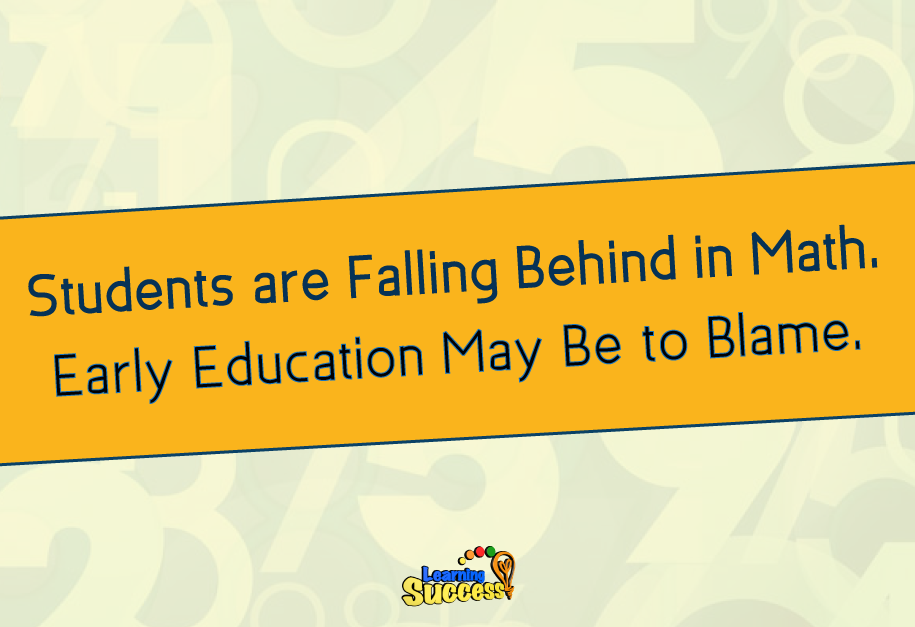
Many nations outpace America when it comes to math and science. Do we not teach our children math and science young enough?
Studies show not enough time in school is spent on science and math.
Recent surveys have reported that in a full class day, less than a minute is spent on math.
Is the education system a failing industry? Many would say yes.
In the article, Math, Science Need to Be a Bigger Part of Early Childhood Education, author, Charles Lussier highlights the importance of the sciences.
He says schools should apply more time to the fundamentals. By focusing on math and science as well as supplementing educational practices with advancements in technology, students can be given greater opportunities to learn effectively. Especially if these aspects are incorporated as early as preschool. After all, children are able to understand complex ideas at young ages.

Preschoolers need to be exposed to more math
Preschool aged children are not being exposed to enough math. Some might be startled to learn that some students only spend—on average—58 seconds on math over the course of a six hour day. Emphasis on the STEM system is key to making a change.
There may be a pre-existing fear that exists among early educators in regards to math and science. What they may not know, is preschool is where the foundation is built for a long life of learning. That includes complex subjects such as mathematics. The more teachers are properly trained to instruct young minds on math and science—the better.
Teaching math at a young age has benefits
STEM is important for young children. However, the way it is currently taught does not help students as well as it could. For example, the teaching of math goes no further than learning numbers. Avoiding theory.
Students taught math and reading at an earlier age learn to appreciate the subjects earlier in life.
Early abilities are indicative of later abilities. So start young.
Key Takeaways:
One of the strongest themes in the National Science Education Standards (NSES) is that all children can learn science and all children should have the opportunity.
Karen K. Lind makes the following points in the article, Early Childhood Science Education:
Emphasis on math and science instruction in elementary and secondary grades is almost nowhere to be found in many preschools and early childhood settings. In one study, researchers found that during a six-hour day, 58 seconds were devoted to math.
Observing a prekindergarten class for a day, researchers found 3 percent of the time was occupied by teaching math, and only 1 percent on science. Finally, when researchers covered 49 hours in six classrooms, they found math wasn't taught at all.
Brenneman’s talk, titled The Early Years Count: Why STEM Matters for Young Children, is part of a recently revived speaker series focusing on early childhood education.
Studies have shown that the younger students are exposed to math, the higher the chances of them becoming better at the subject later in life. One of the reasons why you don’t see this taught is many preschools is because educators fear of the subject. However, there is now more of a demand for math to be more prevalent in preschools. Studies show that only 10% of preschool curriculum is focused on math.
If you or someone you know is having difficulty with school, then you’ll want to try our free assessment. Learn how to get to the root of the problem. Find out which micro-skills need strengthening to increase learning ability. Take our assessment by clicking here.
Do You Need help with a Dyscalculia Difficulty?
Our simple online analysis will help you get to the core of the problem and find the right solution for you.
Understanding how to help someone with a learning difficulty starts with understanding which micro-skills are affected. When you learn which of the micro-skills is the problem, you will then be on your way to solving it.
You'll also learn how to:
- Build confidence
- Enhance Learning ability
- Eliminate avoidance
- Build grit
You can get this analysis for free by filling out this simple form. This will help you get to the bottom of a learning difficulty and provide you with a solution. If you are ready to put this problem behind you click the button below and fill out the form.










